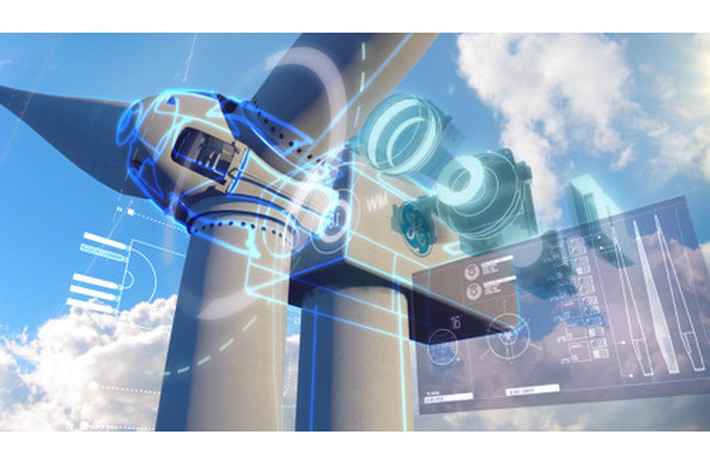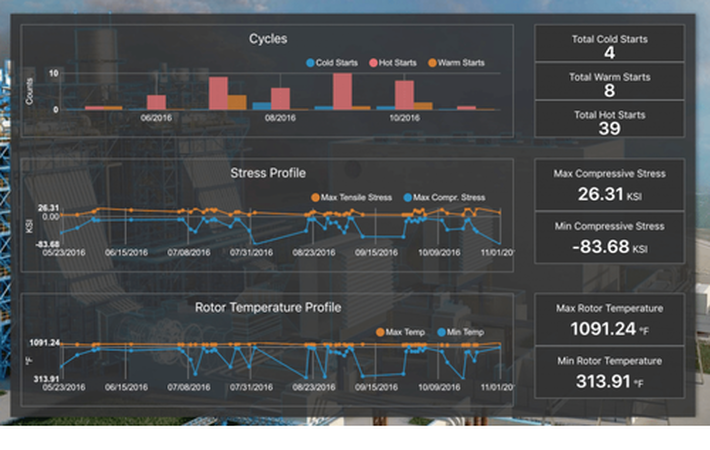
Published on 01/16/2017 | Technology
General Electric’s vice president of software research Colin Parris has an unusual phobia. As a frequent flyer, he is aware that planes can be subject to unexpected delays or mechanical problems, but Parris lives in fear of a broken seat recline mechanism.
When you think about everything that can go wrong during a flight, an inability to put your seat into the upright position during take-off and landing might seem to be nothing more than a minor inconvenience.
That is not the problem. What Parris worries about the most is that a malfunctioning seat is in direct contravention of the U.S. Federal Aviation Administration’s Regulations and Policies that relate to the position of the seat itself before and after takeoff. In other words, a broken seat can be the industrial asset that prevents you from traveling.
A simple malfunctioning seat can end up costing an airline thousands of dollars if the plane can’t takeoff on time or a spare part can’t be found. And what is especially annoying is that a digital version of that asset could have told engineers that the seat was about to fail days if not weeks in advance.
According to Parris, predictive maintenance is one reason GE has invested heavily in the Industrial Internet of Things. A key part of this investment is an increased focus on “digital twins”—virtual versions of the billions of physical assets that make up the world’s industrial infrastructure.
“The digital twin is a living model of something that delivers a business outcome,” said Parris, in an interview with ARC at GE Digital’s recent Mind + Machines event in San Francisco. “What we had before now was that everybody created models. Somebody tells me that I have a model of how something works, but they never change the model. The model comes with a system but what happens is in two or three years time something is not right and they say the model is wrong.”
What it comes down to is data collection and analytics, Parris said.
When an asset (a part, device or other mechanical instrument) fails or is about to fail, most industrial companies collect data without really knowing what data to gather. This is call unstructured data. The company will then reconfigure the data collection and analysis model to make sense of the data, refine the process before having to change it again when more problems creep up months down the road. It is a static, read and react model.
“We looked at this and said how about if we have a living model?” said Parris.
The digital twin is a cloud-based virtual representation of a physical asset. To demonstrate how it works, GE has helpfully designed three “games” that allow people to play the part of an engineer, which can be accessed here.
Modern industrial assets generate millions of data points that can be studied and assessed to determine where a future problem might occur. Integrating a digital twin into a maintenance schedule means that asset owners—many of whom are GE customers or have service contracts—can decide whether or not to replace an asset depending on the information that the digital twin provides.
Building a digital twin of an existing physical asset takes the guesswork out of data collection. The key is to take the data that is coming in and pair that with the algorithm that works with particular model. When that happens, the engineer can continually update the parameters around the model so that the operating mode or environment in the digital version matches the physical one.
Industry is forecast to be the big winner in the Internet of Things, with 50 billion assets—machine parts, sensors, monitors, appliances etc.—attached to the Internet by 2020. These assets will be part of bigger machines, which will allow the Industrial Internet of Things to become an ecosystem where machines talk to each other, communicate with humans and, ultimately, leverage data to make optimized decisions.
In essence, the machine or asset lives a virtual life as a digital twin. This allows engineers to monitor its efficiency and potential wear and tear. The digital twin can also be adapted for different environments and customized to take advantage of data generated by other virtual machines in the ecosystem.
Parris cites an example of a steam or gas turbine. When one of these assets needs to be shut down in the real world, it can take anywhere from four to six weeks to cool. Once that happens, an engineer can (in theory) access the part that has failed and replace it.
But it is not just a question of turning the turbine back on. The asset has to be ramped back up to its operating temperature of potentially 3,000 degrees Fahrenheit, which can take another two to three weeks. A digital twin can provide a company with enough data in advance to make sure that its bottom line is not effected by an offline asset.
“The first thing the twin wants to tell you is an early warning,” Parris said. “The second thing is a prediction—give me a prediction of a failure or opportunity. The third thing you want to know is dynamic optimization.”

There is an added bonus for the digital twin … mixed reality.
GE has partnered with Microsoft to build a virtual interface for the digital twin program that includes voice controls to determine operational difficulties. Parris said that a digital twin can access blueprints and create visual environments using the Microsoft HoloLens which allow an engineer to interact with an asset in a virtual space. The trick is to make the problem more consumable by a human in an immersive experience.
“Visual capabilities are something that people always understand,” said Parris. “If I don’t understand something, I point to it. I walk and I look at an area. You are giving visual cues to the twin. If I look at that part, I am looking in this area. On a flat screen, you don’t know what you are looking at. But with the HoloLens, it’s tracking field of vision.”
According to GE Digital’s head of engineering for the Predix platform Himagiri Mukkamala, the digital twin is now a core factor in leveraging the data generated by the Industrial Internet of Things.
When GE launched its cloud-based Predix platform as a service back in February, the aim was to provide developers and companies with the tools to build apps that turn the operational data of an asset into actionable insights. The platform would then generate an ecosystem that moved away from the traditional “break and then fix” model into a “predict-and-prevent” model. This has effectively made the digital twin the key component of the Predix platform.
“I knew in my mind that this is where the market was headed and so we have augmented the capabilities to enable customers to build these digital twins,” Mukkamala said, in an interview with ARC at Mind + Machines. “It’s the ability to model your physical asset in a digital world. It’s the ability to tie those analytics to these assets and then run the analytics against the data sets that are coming in real time or on a scheduled basis … the culmination of which is the digital twin.”